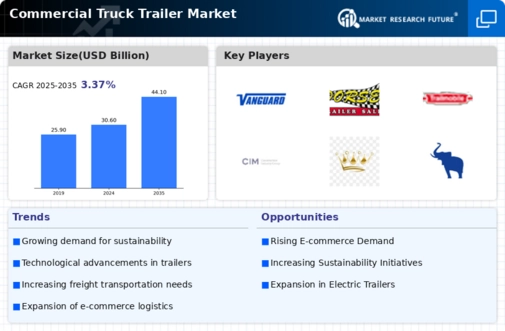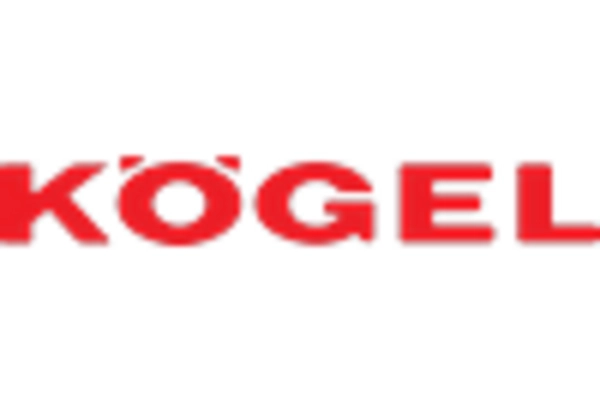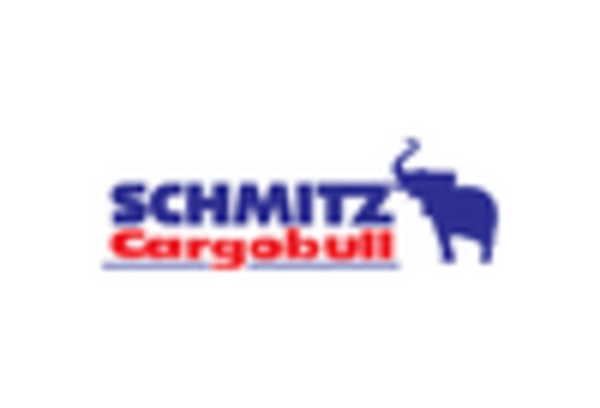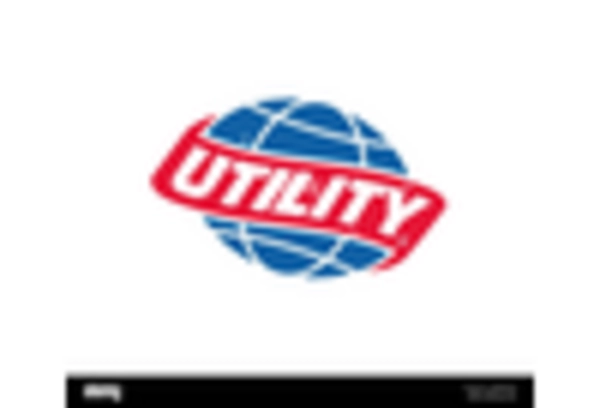Infrastructure Development Initiatives
Infrastructure development initiatives play a crucial role in shaping the Commercial Truck Trailer Market. Governments are increasingly investing in transportation infrastructure to support economic growth and improve logistics efficiency. In 2025, various regions are expected to witness significant upgrades to highways, bridges, and ports, facilitating smoother freight movement. This investment not only enhances the operational capabilities of commercial truck trailers but also encourages fleet operators to expand their services. The improved infrastructure is likely to lead to increased demand for trailers, as businesses seek to capitalize on enhanced connectivity and reduced transit times.
Rising Demand for E-commerce Logistics
The increasing demand for e-commerce logistics is a pivotal driver for the Commercial Truck Trailer Market. As online shopping continues to expand, the need for efficient transportation solutions becomes paramount. In 2025, the e-commerce sector is projected to account for a substantial portion of freight movement, necessitating the use of commercial truck trailers for last-mile delivery. This trend indicates a shift in logistics strategies, where companies are investing in advanced trailer technologies to enhance delivery speed and reliability. The Commercial Truck Trailer Market is likely to benefit from this surge, as businesses seek to optimize their supply chains and meet consumer expectations for rapid delivery.
Sustainability and Environmental Concerns
Sustainability and environmental concerns are increasingly influencing the Commercial Truck Trailer Market. In 2025, there is a growing emphasis on reducing carbon footprints and adopting eco-friendly practices within the transportation sector. Companies are exploring alternative fuel options and energy-efficient trailer designs to align with sustainability goals. This shift is likely to drive innovation in trailer manufacturing, as businesses seek to meet consumer demand for greener logistics solutions. The market may witness a rise in the adoption of trailers that utilize lightweight materials and aerodynamic designs, contributing to improved fuel efficiency and reduced emissions.
Regulatory Compliance and Safety Standards
Regulatory compliance and safety standards are becoming increasingly stringent, influencing the Commercial Truck Trailer Market. In 2025, manufacturers and fleet operators are expected to adapt to new regulations aimed at improving safety and reducing emissions. This shift may drive innovation in trailer design, as companies seek to meet compliance requirements while maintaining operational efficiency. The emphasis on safety features, such as advanced braking systems and stability controls, is likely to enhance the appeal of modern trailers. Consequently, the market may experience growth as businesses invest in compliant and safer transportation solutions.
Technological Integration in Fleet Management
Technological integration in fleet management is a significant driver for the Commercial Truck Trailer Market. The adoption of telematics and fleet management software is transforming how companies operate their logistics. In 2025, the use of data analytics to optimize routes and monitor trailer performance is expected to become commonplace. This technological advancement not only improves operational efficiency but also reduces costs associated with fuel and maintenance. As businesses increasingly recognize the value of data-driven decision-making, the demand for technologically advanced trailers is likely to rise, further propelling the market forward.

















Leave a Comment